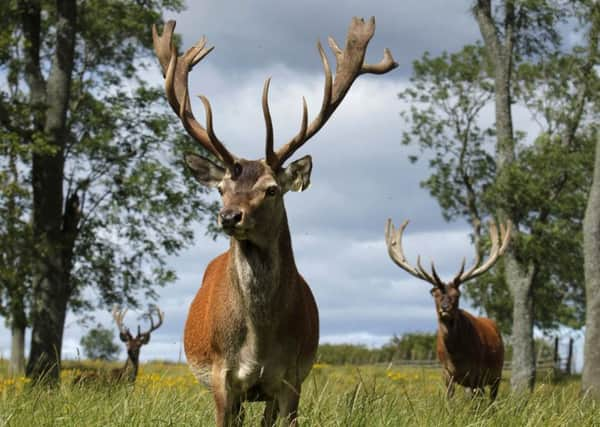Call for urgent action to tackle threat to woodlands from deer


The study, compiled by Holyrood’s environment committee, found that deer were a “major factor” in limiting woodland condition recovery and that changes need to be made to the way in which wild deer are managed, monitored and culled if Scotland is to achieve its biodiversity targets by 2020.
However, environmental groups tasked with managing wild deer pointed to budget cuts and said they did not have the resources to tackle the problem as comprehensively as they could.
Advertisement
Hide AdAdvertisement
Hide AdDeer are responsible for damaging woodlands: including harming trees and plants such as bluebells, eating seedlings and reducing cover for birds including endangered nightingales.
Around 68,000 deer are culled every year - the same figure as in 2004 - although culling numbers decreased substantially in 2011 to 2012, before rising again.
Graeme Dey, convener of the Environment, Climate Change and Land Reform Committee, said the group had asked Scottish Natural Heritage and the Scottish Government to address the problem urgently.
He said: “The committee welcomes the fact that some progress has been made but it’s clear that some Deer Management Groups and the Scottish Natural Heritage need to raise their game to deliver the step change needed.
“Habitats damaged by deer take a long time to recover. We simply can’t go on like this if we’re to achieve the Scottish Biodiversity Strategy targets.”
The report said that if deer densities were lower across much of Scotland, the benefits the animals bring could be largely maintained and many of the costs such as deer vehicle collisions and impacts on forestry productivity could be reduced. Between 1961 and 2016, red deer densities in Scotland have increased by 60 per cent overall although there are marked variations in deer densities across the country.
Andrew Bachell, policy director at Scottish Natural Heritage, was quoted in the report as saying that its budget had been reduced by 30 per cent in the past three years.
He said: “It is therefore impossible for us to do everything that we used to do – or that we and the Deer Commission for Scotland used to do – so we have to cut our cloth accordingly. As a result we [don’t] do as much monitoring.”
Advertisement
Hide AdAdvertisement
Hide AdSue Walker, acting chairwoman of Scottish Natural Heritage (SNH), said: “Scotland’s deer populations are a key part of our outstanding natural heritage.
“At this point, SNH hasn’t seen the report, but we are grateful to the committee for the care and time it has spent considering the challenges of deer management across both the Scottish lowlands and uplands. We will of course be considering the conclusions carefully.”